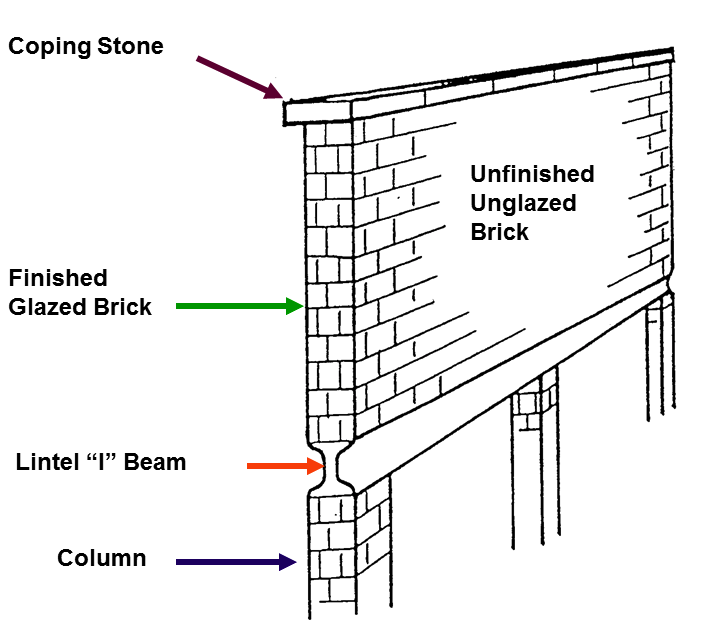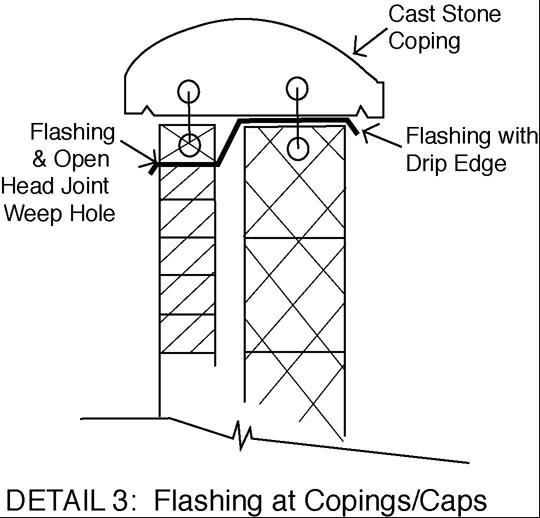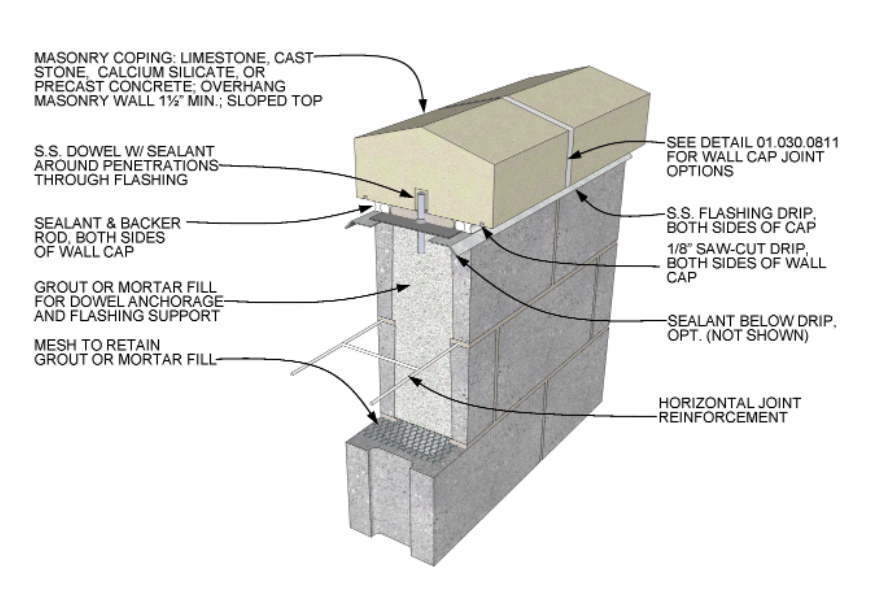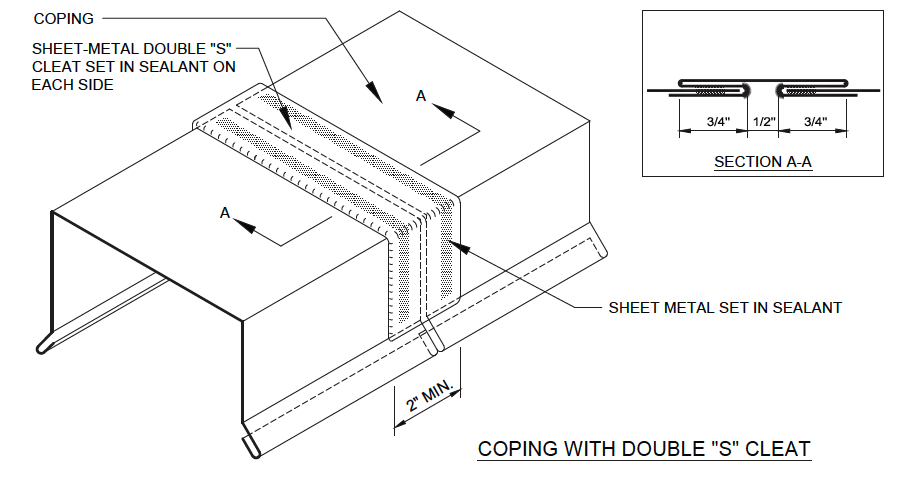

Damage from moisture intrusion caused by coping leakage. Leakage moves down through the wall cavity until it meets an element that prevents further downward movement. It then migrates outward, deteriorating mortar and brick before evaporating from the face of the wall.

Parapets have often been constructed with inner and outer walls separated by an air space that must be protected from moisture intrusion. One common method is to install sheet metal flashing as the primary barrier to leakage and a concrete or stone coping above the flashing.

Another method is to fill the gap with grout or mortar, using sheet metal flashing at the edges.

And yet another method is to use sections of sheet metal coping alone. Coping sections may overlap with a sealant used between overlapping sections…

…or section joints may be protected using a “drive” cleat.
NOMENCLATURE
Terms can be confusing. When sheet metal is used beneath stone or concrete coping, it’s called “flashing”. When sheet metal alone is used, it’s called “coping”. The best description is that whatever material faces the majority of the weather is called “coping”.
